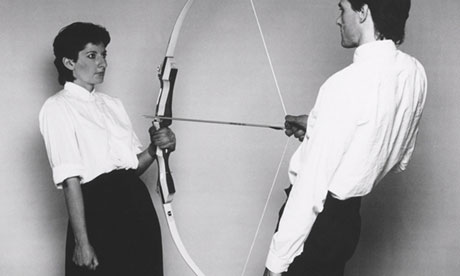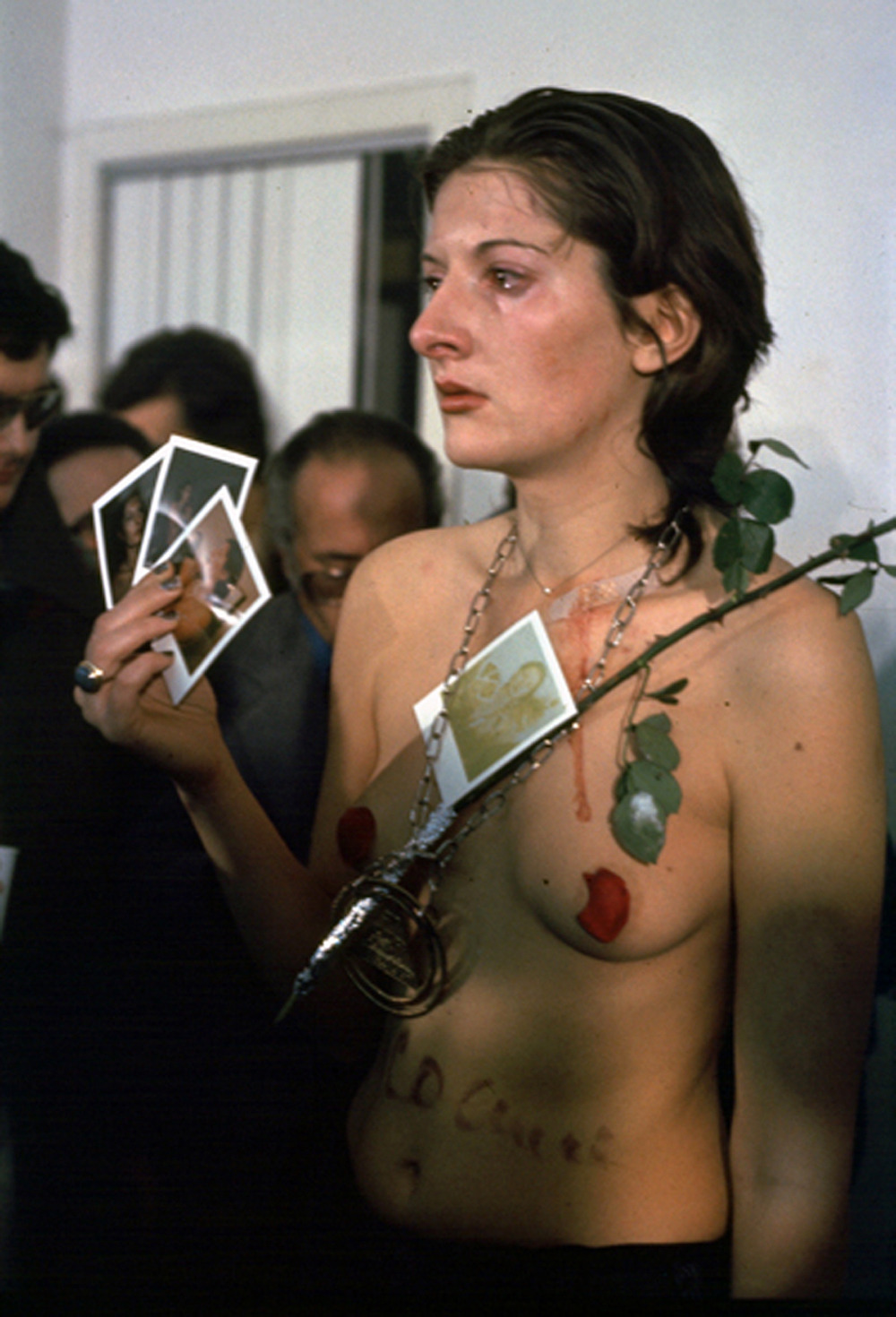Marina Abramovic is a performance artist whose work concentrates on getting the audience involved in her work. She endures extended periods of performance in an attempt to push the limits of her body. Her performance pieces affect not only her, but the audience as well. The focus of her art is to encourage transformation in herself and the public who view her work. She does this by exposing her audience and herself to the true human nature of us all. She has done this in many ways, from sitting and staring at her viewers until emotions could not be contained, to allowing her audience to have their way with her body with objects she supplied. Her work changed my perception of art because although I was aware of performance art, her pieces took it to another level. The vulnerability and extended hours that she spends on her pieces astounded me and broadened my understanding of performance art.
 |
| Rest Energy with Ulay |
Overall Impression:
Abramovic sets out to expose human nature and her artwork really makes it evident. By allowing her audience to interact with her, she is letting their inner feelings be known to her and themselves. This is most apparent in her performance piece from the early 70s called Rhythm 0, where she gave the audience free reign over her body to do with what they'd like. Overall, I find Marina's work to be very interesting and after reading her explanations behind her acts, I see it as less strange than before but still just as risky and dangerous at times.
 |
| Rhythm 0 |
 |
| The Artist is Present |
 |
| Balkan Baroque |
 |
| The Artist is Present (entrance) |
Closing Thoughts:
Marina Abramovic uses performance art to make people more aware of their actions and to push the limits between performer and audience. Her work and choice of materials help her illustrate the choices that humans can make and they also help her reach her goal of pushing her own body to extreme limits. Abramovic shows through her artwork that humans have much more going on inside than many will admit.
Sources:
- http://en.wikipedia.org/wiki/Marina_Abramovi%C4%87
- http://www.theguardian.com/artanddesign/2010/oct/03/interview-marina-abramovic-performance-artist
- http://www.pbs.org/art21/artists/marina-abramovic



































